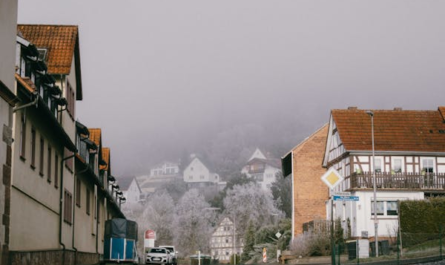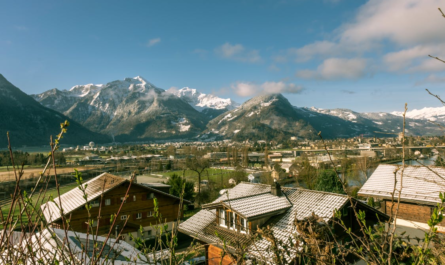Established in the heart of the Tyrolean Alps in Austria, Alpbach is a charming village known for its stunning natural beauty, traditional wooden architecture, and rich history. Over the centuries, this picturesque village has undergone a remarkable transformation from being a hub for mining to becoming a popular destination for tourism. The journey of Alpbach’s evolution offers a fascinating glimpse into the region’s changing economic landscape and how it has adapted to modern-day demands, all while maintaining its cultural heritage.
Early Beginnings: The Birth of Alpbach
Alpbach’s origins can be traced back to the early Middle Ages. The village, with its pristine alpine environment, was initially settled by people seeking to make a living from the land and the rich natural resources it offered. Agriculture played a key role in sustaining the village’s early inhabitants, with farming and forestry being the primary sources of income.
However, it wasn’t long before the discovery of valuable minerals beneath the ground led to a shift in the village’s economic focus. This marked the beginning of Alpbach’s mining era, which would shape the community for centuries to come.
The Mining Boom: Alpbach’s Industrial Revolution
In the 15th century, Alpbach witnessed the birth of its mining industry. The discovery of silver, copper, and iron deposits in the surrounding mountains sparked an industrial boom in the region. Miners from all over Europe flocked to Alpbach in search of fortune, transforming the village into a bustling mining town. By the 16th century, Alpbach had established itself as one of the most significant mining hubs in Tyrol.
The village’s mining operations were primarily focused on extracting silver, which was highly prized during this period. As demand for silver grew, so did the need for skilled labor, and Alpbach became a hub for workers, traders, and artisans. The influx of people led to the construction of infrastructure such as roads, bridges, and communal buildings, which helped foster a sense of community and established Alpbach as a central economic player in the region.
The silver boom reached its peak in the 17th century, but by the early 18th century, the silver mines began to show signs of depletion. The mining industry, once the backbone of Alpbach’s economy, gradually declined, leading to a shift in the village’s way of life.
The Decline of Mining and the Shift to Agriculture
With the depletion of the region’s mineral resources, Alpbach had to find new ways to sustain itself. Agriculture, which had always played a supporting role in the village, began to take center stage once again. The fertile land surrounding the village was ideal for farming, and residents shifted their focus back to cultivating crops and raising livestock.
The decline of mining had a profound impact on the village’s economy and population. As miners left in search of work elsewhere, Alpbach became a quieter, more secluded village. However, its natural beauty, coupled with the strong sense of community, helped the village endure.
Throughout the 19th century, Alpbach continued to evolve. The construction of the first road connecting the village to the rest of Tyrol in 1870 made it easier for visitors to access Alpbach, setting the stage for the eventual rise of tourism.
The Birth of Alpine Tourism in Alpbach
The early 20th century marked a turning point for Alpbach. With the rise of tourism in the Alps, the village began to attract visitors seeking relaxation and adventure in the mountains. The arrival of the first tourists to Alpbach in the early 1900s brought a new wave of economic activity, particularly in hospitality. Inns, hotels, and guesthouses began to emerge as local entrepreneurs recognized the potential for tourism in the area.
The stunning landscapes, clear mountain air, and picturesque alpine architecture made Alpbach a sought-after destination for those looking to escape the hustle and bustle of city life. The village’s secluded nature and tranquil atmosphere also appealed to artists, writers, and intellectuals who sought inspiration in the idyllic surroundings.
In the 1920s and 1930s, Alpbach’s popularity as a summer retreat grew, but it wasn’t until after World War II that the village truly embraced the tourism industry. The construction of ski lifts and the development of winter sports facilities in the 1950s and 1960s transformed Alpbach into a year-round tourist destination. Skiing, hiking, and mountaineering became key attractions, drawing tourists from around the world.
Alpbach’s Commitment to Preserving Its Cultural Heritage
Despite the growth of tourism, Alpbach has always placed great importance on preserving its unique cultural heritage. One of the defining features of the village is its commitment to maintaining traditional alpine architecture. The wooden houses, which are a hallmark of the village, have been carefully preserved, and new buildings must adhere to strict architectural guidelines to ensure that they blend harmoniously with the natural landscape.
This dedication to preserving Alpbach’s cultural identity has earned it a reputation as one of the most beautiful and well-preserved alpine villages in Austria. In 1957, Alpbach was awarded the prestigious title of “Most Beautiful Village in Austria,” a recognition of its efforts to maintain its charm while embracing modern tourism.
Additionally, Alpbach’s commitment to sustainable tourism has helped it strike a balance between economic growth and environmental protection. The village is actively involved in initiatives that promote eco-friendly practices, including the use of renewable energy, waste reduction, and the preservation of its natural surroundings.
The Alpbach Symposium: A Hub for Intellectual and Cultural Exchange
Another important aspect of Alpbach’s transformation is its role as a center for intellectual and cultural exchange. In 1945, the European Forum Alpbach was founded, bringing together experts, scientists, and political leaders from around the world to discuss pressing global issues. The Alpbach Symposium, as it is known, has become one of Europe’s most prestigious forums for dialogue on topics ranging from science and technology to philosophy and the arts.
The European Forum Alpbach has not only helped raise the profile of the village on the international stage but has also contributed to its cultural vibrancy. The symposium attracts thousands of visitors each year, contributing to the local economy and positioning Alpbach as a leading destination for intellectual and cultural exchange.
Modern-Day Alpbach: A Premier Tourist Destination
Today, Alpbach stands as a thriving tourist destination, with visitors from all over the world flocking to the village to enjoy its natural beauty, outdoor activities, and cultural offerings. The village’s ski resorts are among the best in the region, offering world-class skiing, snowboarding, and après-ski experiences. In the summer, tourists can explore hiking trails, bike paths, and scenic viewpoints that showcase the stunning alpine landscape.
In addition to outdoor activities, Alpbach is also home to a vibrant arts and culture scene. The village hosts a variety of festivals, concerts, and cultural events throughout the year, attracting visitors with diverse interests. The Alpbach Music Festival, for example, is a highlight of the summer season, drawing classical music enthusiasts from across the globe.
Furthermore, the village’s rich history and commitment to preserving its heritage have made it an ideal location for those interested in learning about the region’s past. The Alpbach Museum, located in the heart of the village, offers visitors a glimpse into the history of mining, agriculture, and tourism in the area. The museum’s exhibits highlight the transformation of Alpbach over the centuries and the key role it has played in shaping the region’s economy and culture.
The transformation of Alpbach from a mining hub to a world-class tourist destination is a testament to the village’s resilience and adaptability. Over the centuries, Alpbach has faced challenges and changes, but its ability to embrace new opportunities while preserving its cultural identity has allowed it to thrive. Today, Alpbach stands as a model for sustainable tourism and cultural preservation, offering visitors a unique blend of natural beauty, outdoor adventure, and intellectual engagement.
From its humble beginnings as a mining settlement to its current status as a global tourism hotspot, Alpbach’s journey is a remarkable example of how a community can evolve and flourish while maintaining its historical roots. Whether you’re drawn to the village for its breathtaking landscapes, its rich cultural heritage, or its intellectual offerings, Alpbach remains one of Austria’s most captivating and enduring destinations.



